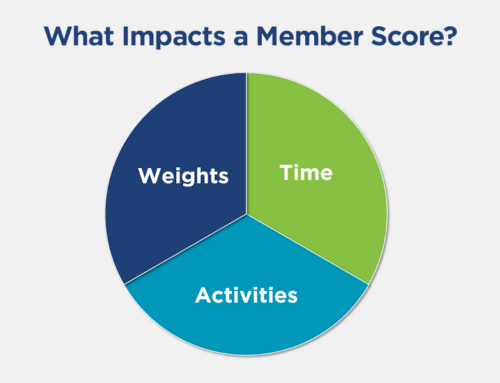Did you know that a 2% increase in retention has the same effect as decreasing costs by 10% and the most effective way to increase retention is to increase customer engagement. I use the word “customer” instead of member because nonmembers engage with us as well.
So how can we increase engagement? The answer is hidden in your data. Data is one of the most important assets an association has because it is unique in its detail and context and can be used to ensure that you are optimally positioned for growth, while remaining relevant and viable in the increasingly competitive world of trade associations, individual membership societies and voluntary organizations. Information you glean from your data can put your organization in a unique thought leadership position and enhance your ability to communicate to your target audiences. Your data also tells the story of customer engagement and who is at risk.
The evidence is clear: Data-guided decisions tend to be better decisions. Harvard Business Review has gone so far as to say, “Leaders will either embrace this fact or be replaced by others who do.” Organizations that learn how to combine domain expertise with data will pull away from the competition.
But research conducted by MIT shows that only 20% of organizations believe they have access to the data they need in order to make good decisions. This is because in the past it was difficult for business leaders to quickly access and understand their data. Traditionally data was stored in a way that only IT staff could access and when business leaders asked questions they had to wait while IT created reports. Once the reports were delivered, often they spawned new questions, which meant waiting again for more reports. Business leaders could not confidently ask questions by interacting directly with their data. This process hasn’t worked well for either IT or leadership.
The answer is providing a single version of the truth with a visual interface that allows business leaders to have an interactive “conversation” with their data. Data discovery techniques combined with visualizations allow association staff to ask new questions of the data in real-time, without asking IT staff for assistance with every request. This is not only more efficient from a time perspective, but it more closely models how we think and makes it easy to ask ever more insightful and precise questions of the data. It also frees up the IT staff to work on other initiatives.
Although it is important to get the technical aspects of data analytics correct – it is really about people and change. It is people who decide what to measure and people who take action on the results of the measurements. This is why we say it is important to make “data guided” decisions, not “data driven” decisions. When starting an analytics initiative, the first step is to identify and prioritize the business questions.
- What are the questions you have, the answers to which if you knew, would enable you to position your association to grow and advance your mission?
- Are there decisions you are making that you feel you do not have all the information you need to make the decision? What are those decisions?
Once we have prioritized business questions, the next step is to determine if we have the data we need to answer them, and if not, we develop a strategy to obtain it.
I’ve heard many stories of stalled analytics engagements where the first step was to look at the data to see if they could find “something interesting” – in the hopes of finding a magic bullet that would lead to growth. I find Steven Covey’s adage, “begin with the end in mind” to be sage advice and recommend gaining clarity on our business questions as the first step on the business analytics journey. Often one of the most important questions, is “How are our customers engaging with us and which ones are at risk?” The answer to this question is hidden in your data, waiting for you to understand the story it is telling.




